Proxies of Resistance
Documenting the street art of Black Lives Matter in Minneapolis



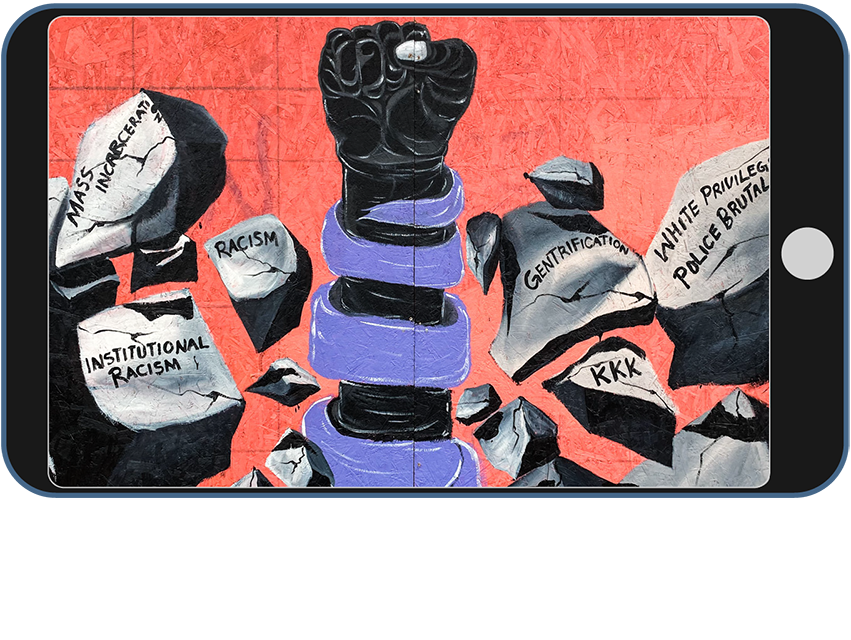
In August 2020, my sibling and I spent an afternoon walking up and down the streets of Uptown, a neighborhood in southwestern Minneapolis. We were taking photos of all the street art we could find that had been painted on the walls, windows, and doors of businesses along West Lake Street and Hennepin Avenue.
A few months before on May 25, a Black man named George Floyd was murdered by former Minneapolis police officer Derek Chauvin at the intersection of East 38th Street and Chicago Avenue, less than five miles away from the streets of Uptown. In the weeks following his death, Black Lives Matter protests erupted throughout the city, and murals demanding justice were painted on every available surface. Even months afterwards, much of this art had persisted, well into the end of the summer. Although the protests had decreased in number, these plaintive expressions of grief, both large and small, continued to reclaim these urban spaces, offering a persistent and inescapable reminder of the events in the months before.
But there were also signs of decay — places where art had been covered up, or removed and placed in the trash.
This city, after all, is a place of constant change. The face of this neighborhood had been painted over by protests demanding justice, but that paint would soon be washed away by another force animated by the long arm of time: gentrification.
(Photos taken at 2737 Hennepin Ave., Minneapolis)
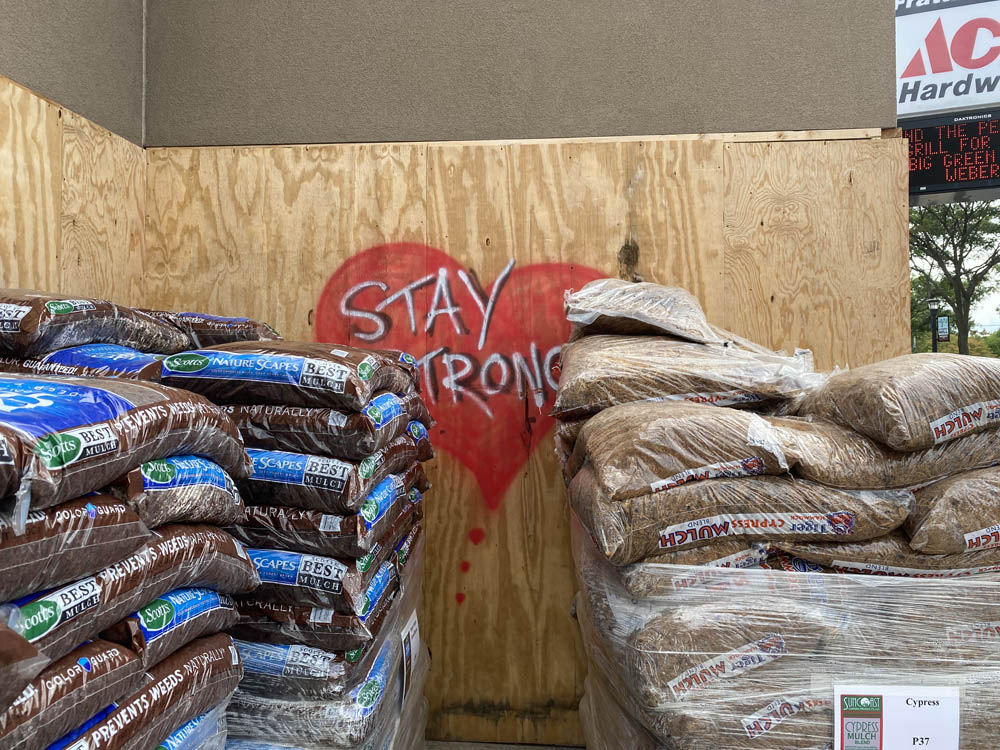
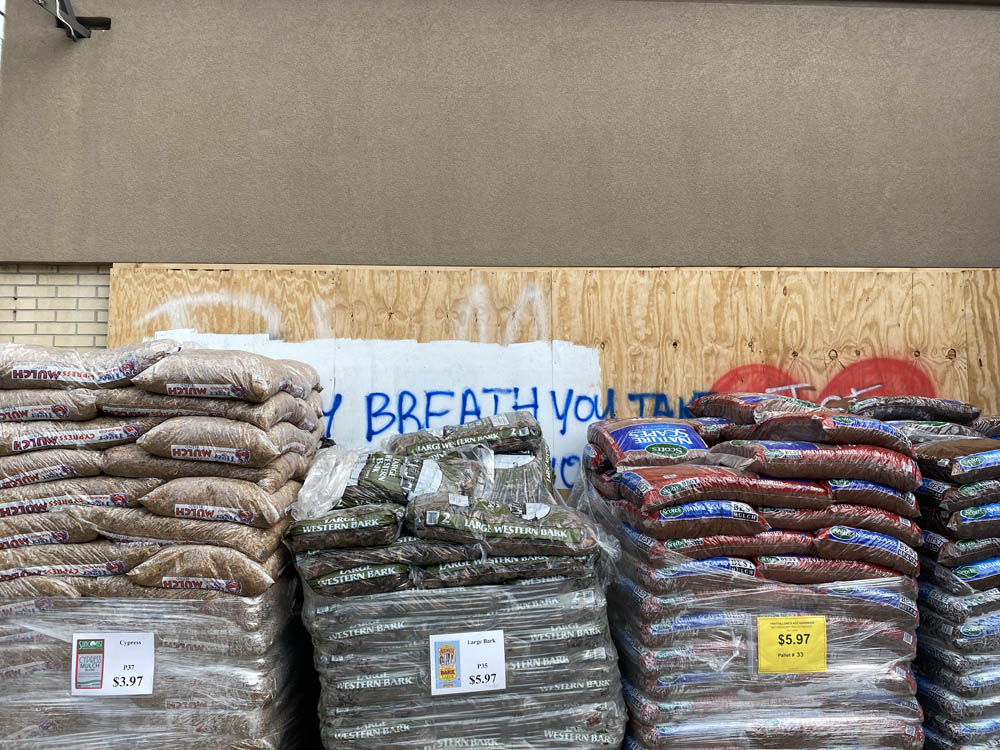
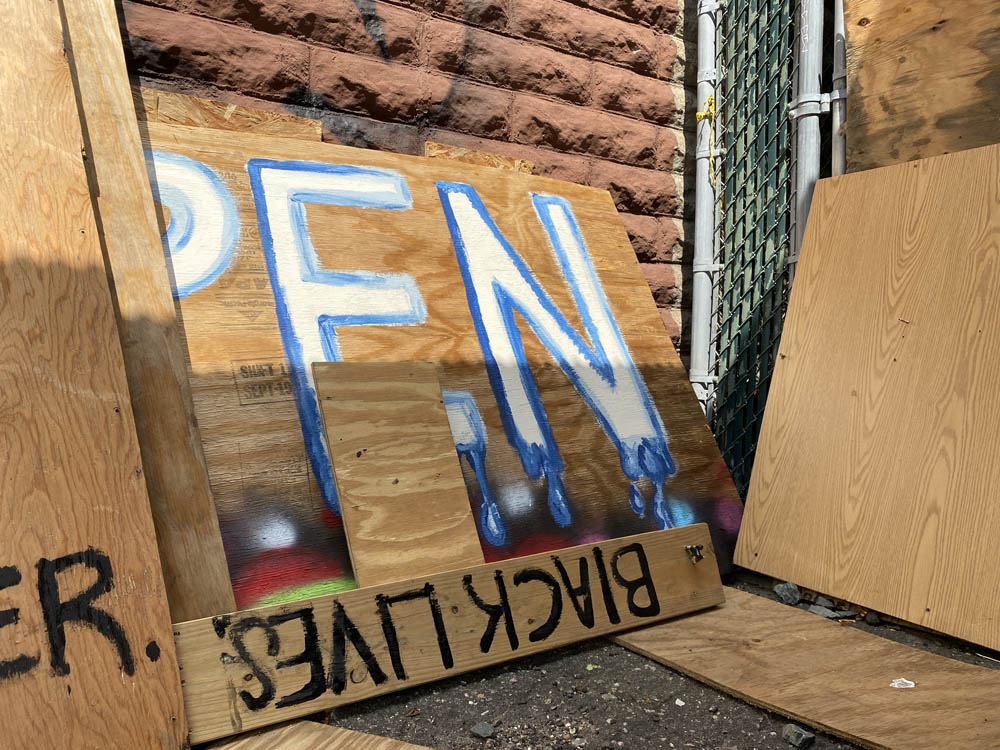
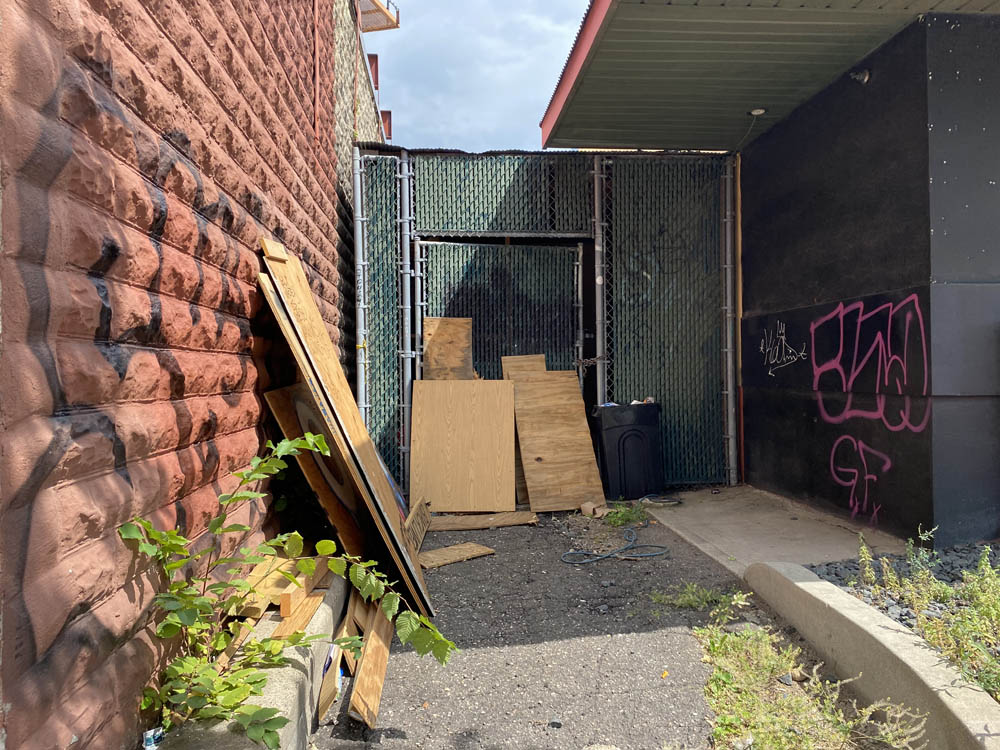
And so, with urgency,
we collected.
As we walked along the streets, we collected photos of all the art that we could find.
We collected in the hope of documenting this moment in time, and all of the grief wrapped up in that moment.
We collected knowing that grief would eventually be reclaimed by the many entropies endemic to the climate in which it had sprouted — of people, politics, and the urban environment.
And as we collected, we started to notice something. Within each mural, there was a common collection of symbols, references, and styles of composition: images of George Floyd; hashtags such as #BlackLivesMatter; drawings of hearts, flowers, and fists.
And these symbols were recycled and extended across the murals, reinterpreted and recomposed to yield new invocations of grief and supplications of justice.
These symbols signaled whole bodies of experience and institutions of memory; they revealed a network of dense meaning sprawling across not only the urban space in which they were drawn but also the long arms of history, carrying the accumulated trauma of generations upon generations.
The gallery below illustrates some of these networks of meaning and the tapestries of experience they yield.
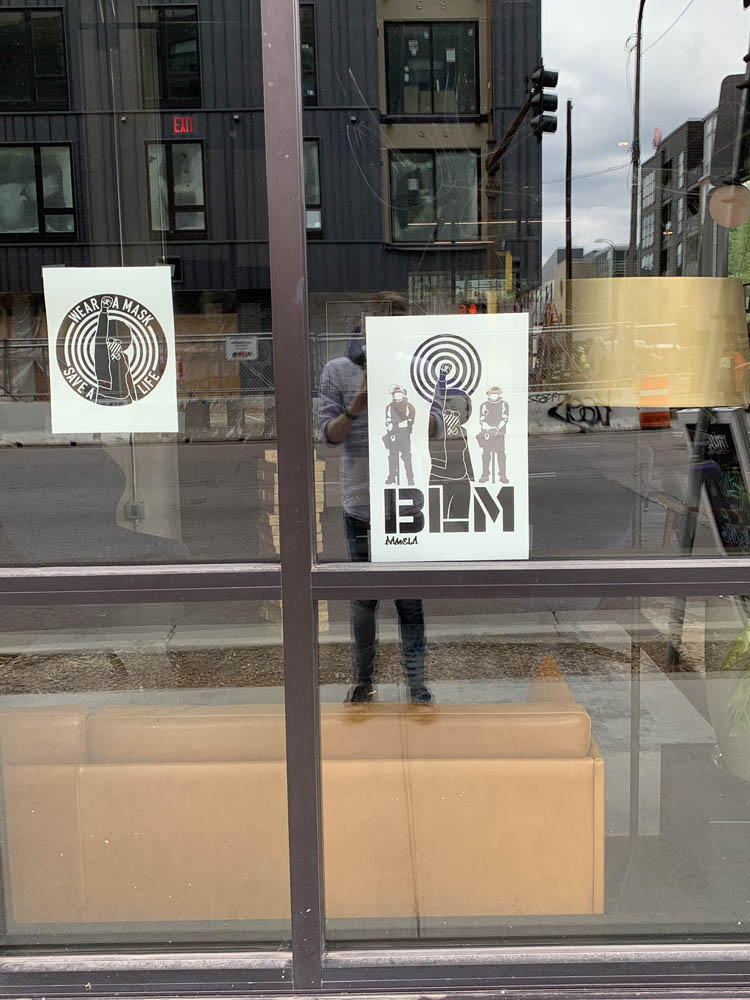
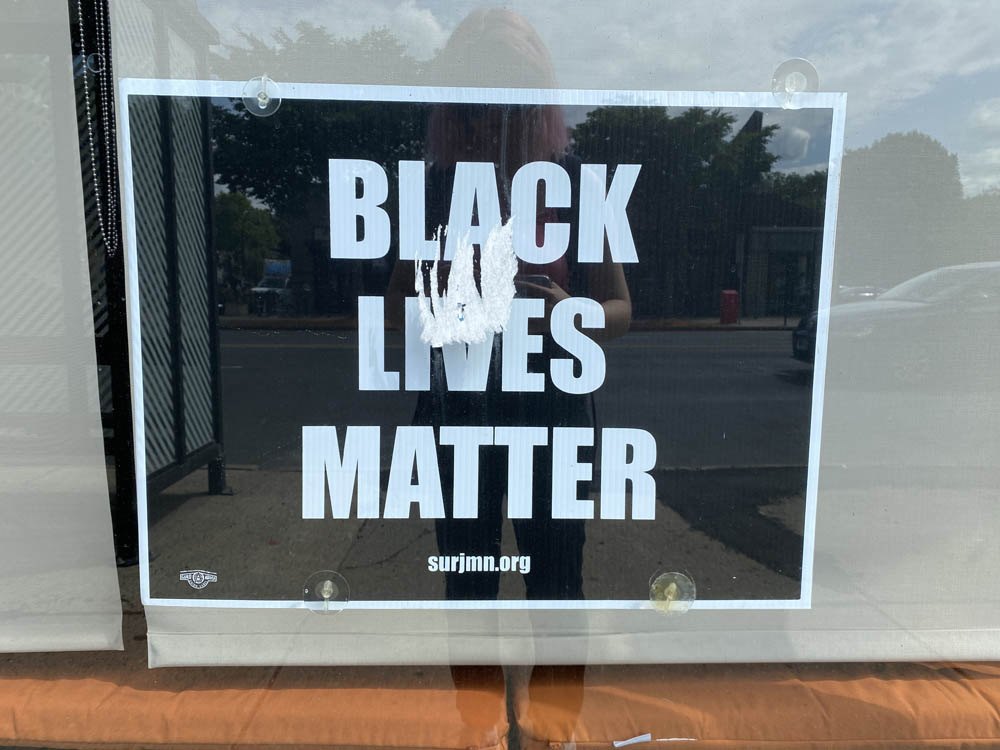
But there is something sticky about documentation: it is reflexive. It renders visible the difference of power between documenter and documented, that valley in which the messy voice of experience is colonized by the stabilizing hand of order. And in collecting these photos and navigating the networks of their symbols, we, too, became part of the same body of trauma that we were documenting.
For it is in these unexpected moments of reflexivity, captured in an accidental reflection, that we are reminded that to document is a practice planted in privilege. The one who documents makes choices, both explicit and implicit, about who or what is worthy of being rendered visible and who or what gets left out. The one who documents makes choices about what counts as meaningful, and what is deserving of salience, rendered through the hands that point the camera.
And when these choices are wrapped up in the crises of seeing laid plainly visible by Black Lives Matter, to document is to be complicit in the spectacle of race:
Who are we, as bodies with white skin, to document these artifacts of trauma — trauma that we can observe safely and at a distance, behind the lens of a camera?
But it is precisely for this reason that we remain compelled to document, with even greater urgency and with greater care, through this practice of seeing that we steward. Because it is our responsibility — those of us who are most privileged by the freedom to see — to bear witness. It is our responsibility to render visible those who have been stripped of the basic human right of visibility. And bearing witness requires that we, ourselves, commit to seeing in a new way: to see our own identities as entangled in histories and systems of visibility that are complex and constructed beyond our fathoming.
The drawings, hashtags, and pleas for visibility in these works of art are proxies of resistance that are woven into the relationship between documenter and documented. Documenting these works means bearing witness, not only to the artists and identities behind the works themselves but also to ourselves.
And that way of seeing, at least, is a place to start.
Explore the collection
Use the map displayed below to explore the photographs documented in this collection. Click and drag your mouse to pan the map, and use the control buttons in the top left corner of the map to zoom. Photographs are precisely geolocated (with street address, latitude, and longitude) to the places where they were taken. Clicking on a highlighted image opens a panel that shows the thematic symbols contained within them.
Below the map, there is also a list-formatted gallery displaying thumbnails of all the photographs included in this collection. Clicking on a photograph opens a panel displaying additional information.
Within each photograph in the detail view, clicking on a highlighted symbol (e.g., an image of George Floyd) displays a collection of the same symbols across all of the photographs in the collection (e.g., a collection of all variations of images and drawing of George Floyd across all photographs).